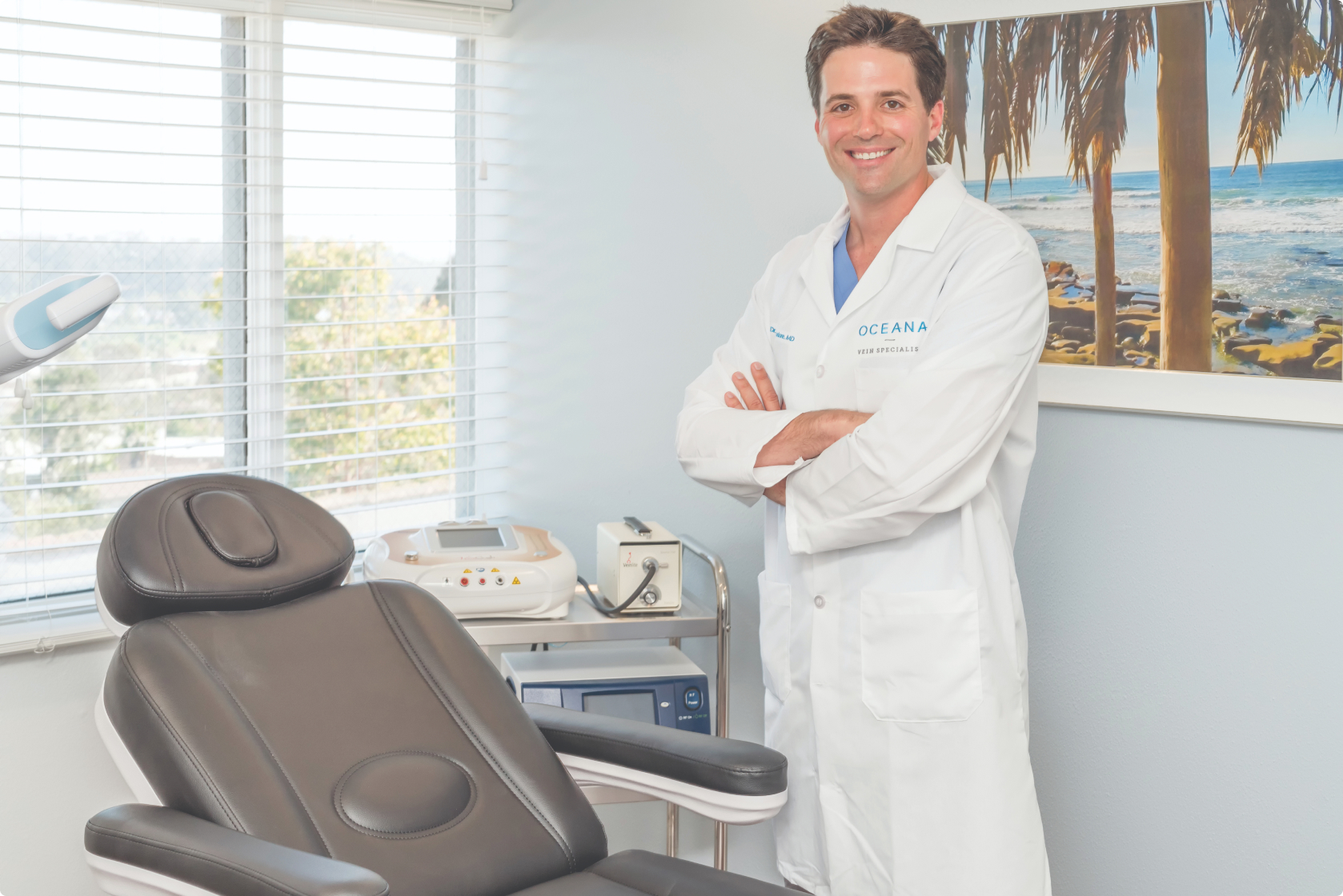Does Insurance Cover Vein Treatment?

Medically Reviewed by Dr. Adam Isadore, MD.
Vascular and Interventional Radiologist, Oceana Vein Specialists.
Does Insurance Cover Vein Treatment?
Understanding whether your insurance covers vein treatment is essential for managing your health and finances. At Oceana Vein Specialists, located at 2125 S El Camino Real #210, Oceanside, CA 92054, Dr. Adam Isadore provides expert evaluations and a range of treatment options for vein disease. If you’re experiencing symptoms such as leg pain or visible veins, it’s important to seek help. To schedule a consultation, call us at 760-231-1165.
Overview of Vein Treatment Options
Vein disease often manifests as varicose veins or spider veins, which can lead to both cosmetic concerns and significant discomfort. Treatments available at Oceana Vein Specialists include:
- Sclerotherapy: This minimally invasive procedure involves injecting a solution directly into the affected veins, causing them to collapse and fade from view. Sclerotherapy is particularly effective for smaller varicose veins and spider veins. Many patients notice results after just one treatment, making it a popular choice.
- Radiofrequency Ablation (RFA): RFA utilizes heat generated by radiofrequency energy to close off damaged veins. A thin catheter is inserted into the vein, and the radiofrequency energy is applied to the vein walls, sealing them shut. This technique is ideal for larger varicose veins and offers quick recovery times.
- Ambulatory Microphlebectomy: This procedure involves removing larger varicose veins through tiny incisions. It is effective for veins that have not responded to other treatments and offers excellent cosmetic results with minimal recovery time.
For a detailed overview of all available treatments, visit our treatments page.
Understanding Insurance Coverage for Vein Treatments
Many patients wonder if their insurance will cover vein treatment, and the answer often depends on several factors:
- Medical Necessity: Insurance plans typically cover treatments deemed medically necessary. If your vein disease is causing significant symptoms like pain, swelling, or skin changes, your insurance may cover the costs. Documentation from your doctor detailing your symptoms can help substantiate the medical necessity of your treatment.
- Cosmetic vs. Medical Procedures: Treatments aimed solely at cosmetic improvements, like the removal of spider veins without associated symptoms, may not be covered. Understanding the distinction between cosmetic and medically necessary procedures is crucial. A thorough evaluation by a vein specialist can help determine the appropriate classification for your treatment.
- Insurance Plan Variability: Coverage can vary widely between insurance providers and plans. It’s essential to review your specific policy and discuss coverage details with your provider. Some plans may require pre-authorization for certain procedures, so it’s wise to check ahead of time.
To learn more about specific treatments and insurance coverage, visit our varicose vein treatment page.
Insurance Deductible, Co-Pay, and Co-Insurance
Understanding your insurance terms can significantly impact your out-of-pocket expenses for vein treatment:
- Insurance Deductible: This is the amount you must pay for healthcare services before your insurance starts to cover costs. For instance, if your deductible is $1,000, you’ll need to pay that amount first before your insurer pays for treatments related to vein disease.
- Co-Pay: A co-pay is a fixed amount you pay for a specific service at the time of your visit. For example, if your policy has a $20 co-pay for specialist visits, you’ll pay that amount during your appointment.
- Co-Insurance: This is the percentage of costs you are responsible for after your deductible is met. For instance, if your plan covers 80% of the treatment costs, you would be responsible for the remaining 20%.
Understanding these terms can help you plan for the financial aspects of your vein treatment. For more information on financial assistance and options, explore our resources on insurance and payment options.
Medicare and Other Insurance Options
Medicare often covers treatments for vein disease when they are deemed medically necessary. Coverage can vary based on specific circumstances, including the severity of symptoms and the treatments recommended by your physician.
If you are covered under Medicare or other insurance plans, it’s advisable to contact your provider for clarification on what services are covered and any required pre-authorizations. Our team can assist you in navigating this process.
Explore more about insurance coverage for varicose veins to understand what options are available to you.
Consulting a Specialist
If you’re experiencing symptoms associated with vein disease, it’s important to consult a qualified vein specialist. A board-certified vein doctor will conduct a thorough evaluation and discuss your treatment options, helping you understand what may be covered by your insurance.
Dr. Adam Isadore at Oceana Vein Specialists is recognized as one of the best vein specialists in Oceanside, offering a comprehensive approach to diagnosing and treating vein disease.
Conclusion
Understanding insurance coverage for vein treatment is crucial for managing both your health and financial responsibilities. Recognizing the signs of vein disease and seeking timely treatment can help prevent serious complications and improve your quality of life.
If you’re experiencing symptoms or have questions about your treatment options and insurance coverage, don’t hesitate to reach out. Contact Oceana Vein Specialists at 2125 S El Camino Real #210, Oceanside, CA 92054 or call us at 760-231-1165 to schedule your consultation today!
Request an Appointment
Fill out the form below and we will get back to you today to schedule your appointment.


